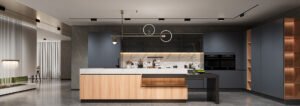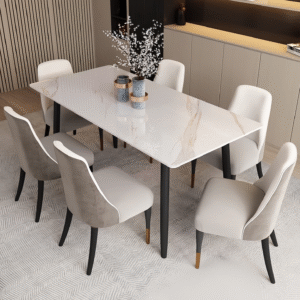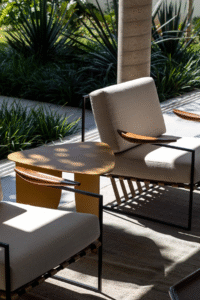Bathroom vanity is one of the indispensable core furniture in modern bathroom. It not only serves as a practical washing and storage platform, but also enhances the overall beauty of the bathroom through design and function. However, to choose the right bathroom vanity, it is important to understand the different types of combination forms, functional characteristics, and their advantages and disadvantages. From single basin to double basin, from wall-mounted to open, various combinations meet different space and living needs. As a leader in the field of whole-house customization, CS Home helps you find a bathroom vanity solution that suits your home needs by analyzing the combination methods, functional characteristics, advantages and disadvantages of five classic vanity types.
-
Combination of bathroom vanities
The combination of bathroom vanities determines their appearance, function and spatial adaptability. The following are five main types and the combination characteristics of corner vanities:
1) Single-basin washroom vanity
- Combination: Compact single sink (width 50-80 cm), with drawers or small cabinets, suitable for small bathrooms or guest bathrooms.
- Matching suggestions: Match with round mirrors and single-hole faucets to keep it simple; optional light-colored quartz countertops to magnify the sense of space.
- Applicable scenarios: single apartments, guest bathrooms, pursuing minimalist style.
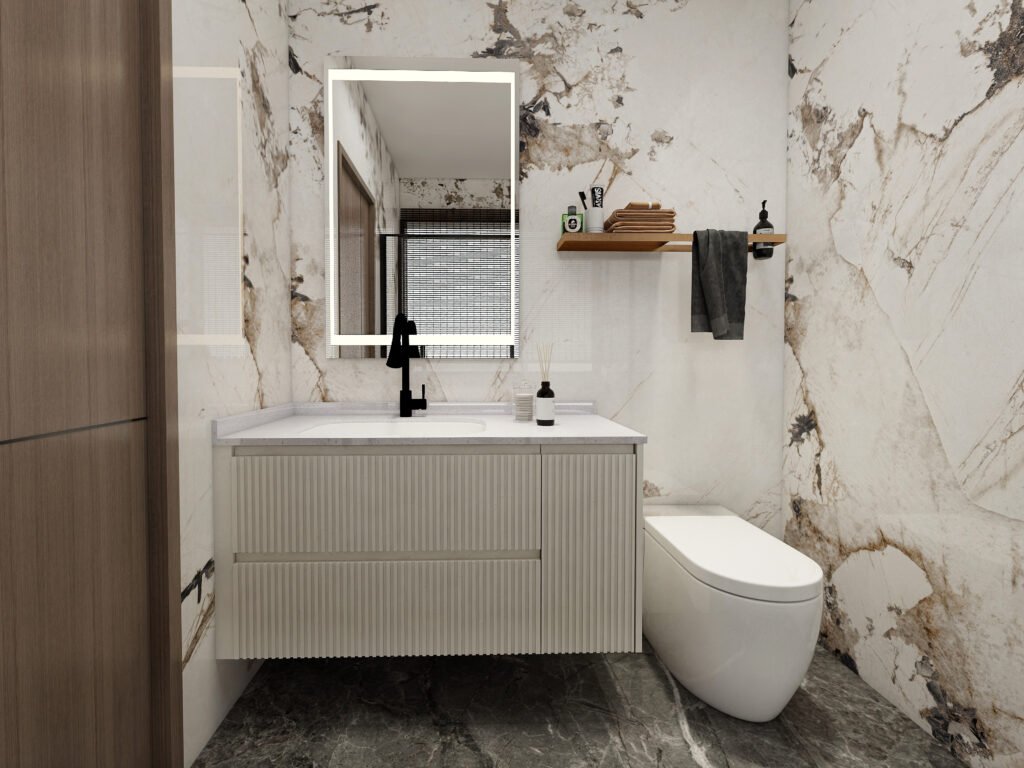
2) Double-basin vanity
The double-basin design can support two people to use at the same time, providing large storage space, and is also suitable for storing bathroom supplies for multiple family members. It is one of the first choices for family bathrooms.
- Combination: Spacious double sink (width 120-180 cm), with multiple drawers or cabinet doors, suitable for large master bathrooms.
- Matching suggestions: Match with large rectangular mirrors and double faucets to improve practicality; marble countertops add a sense of luxury.
- Applicable scenarios: multi-person families, master bathrooms, pursuing shared space.
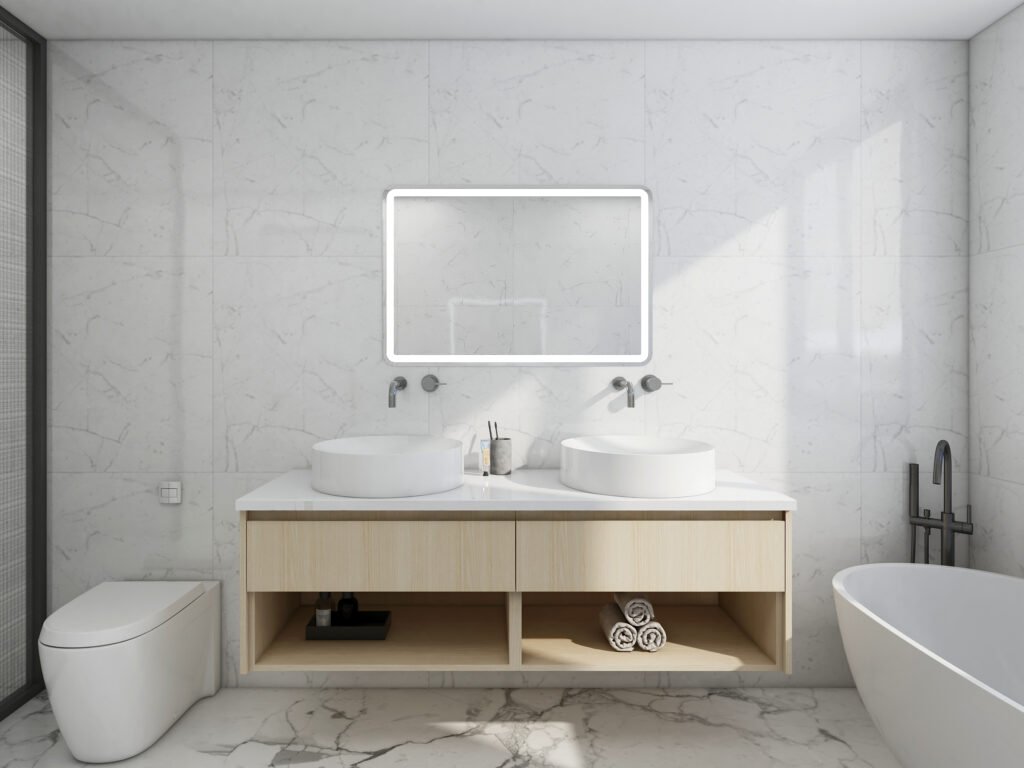
3) Wall-mounted washbasin
Wall-mounted dressing tables maximize space utilization by hanging the cabinet on the wall.
- Combination method: suspended design (width 50-100 cm), no cabinet below or with small drawers to free up floor space.
- Matching suggestions: with backlit mirrors and hidden hardware and hidden storage design to highlight the modern feel; MDF or plywood materials are suitable for a variety of finishes.
- Applicable scenarios: small or medium-sized bathrooms, modern or Nordic style.

4) Freestanding washbasin
Freestanding dressing tables are directly on the ground, with strong stability and no need for wall support. They are the most classic and common dressing table structure.
- Combination method: floor-standing cabinet (width 80-120 cm), with multi-layer drawers or cabinet doors (increased storage function), and solid wood frame provides stable support.
- Matching suggestions: with carved mirror frames and retro faucets to create a classic atmosphere; stone countertops enhance the texture.
- Applicable scenarios: medium or large bathrooms, country or retro style.
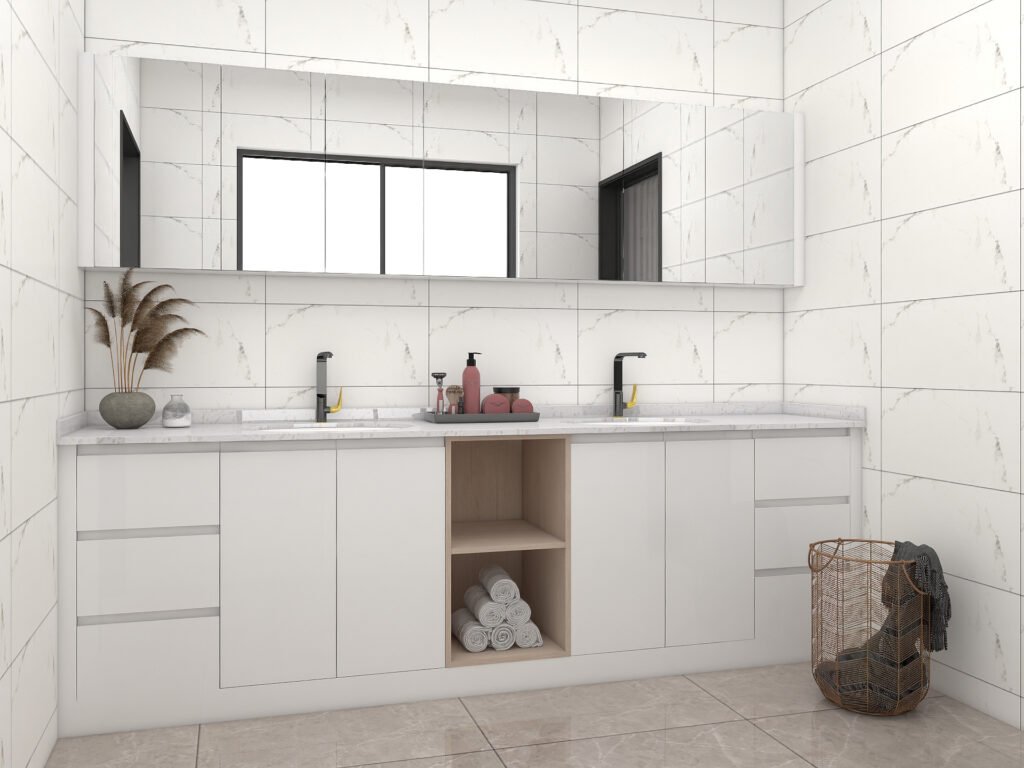
5) Open restroom vanity
Open vanity is mainly based on shelves and frames, without traditional cabinet doors, emphasizing display and transparency.
- Combination method: metal frame (width 60-100 cm), with open shelves, the countertop can be wood or stone.
- Matching suggestion: with decorative baskets and black-framed mirrors to enhance personality; metal and dark wood are suitable for industrial style.
- Applicable scene: small bathroom, industrial style, simple style or bathroom with limited space.
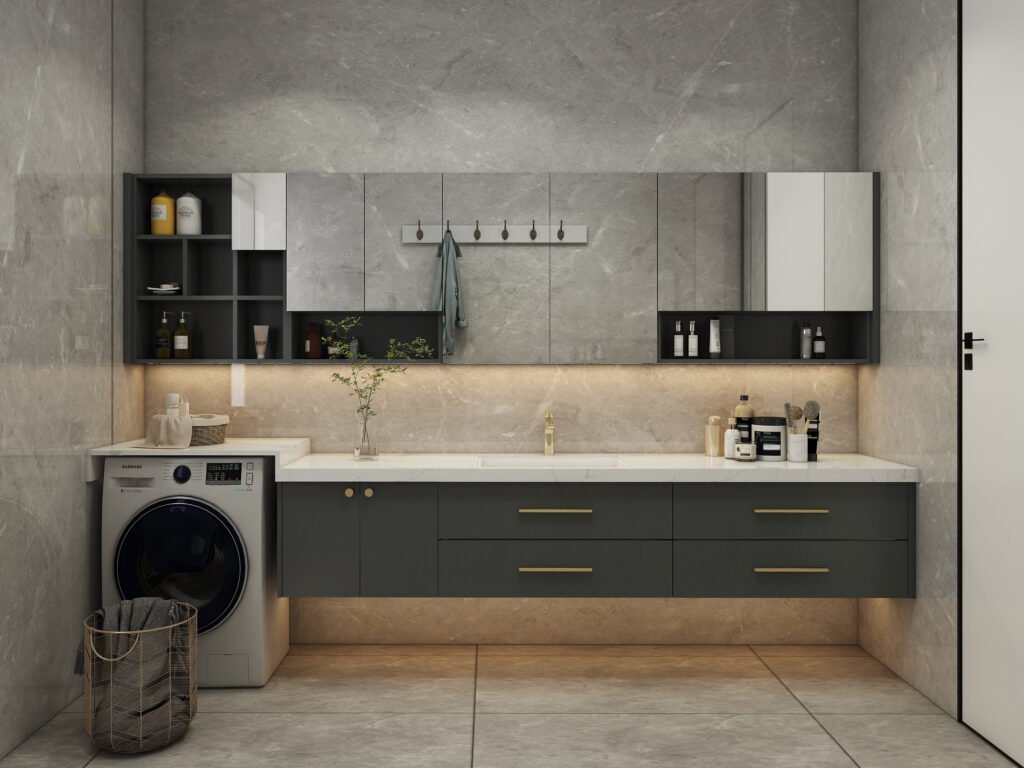
6) Corner restroom vanity (small bathroom supplement)
Combination method: triangular or fan-shaped sink (width 40-60 cm), with small cabinet or shelf, embedded in the corner.
- Matching suggestion: with small round mirror and simple faucet to maintain functionality; light-colored countertop optimizes the sense of space.
- Applicable scene: irregular or narrow bathroom, need to maximize space.
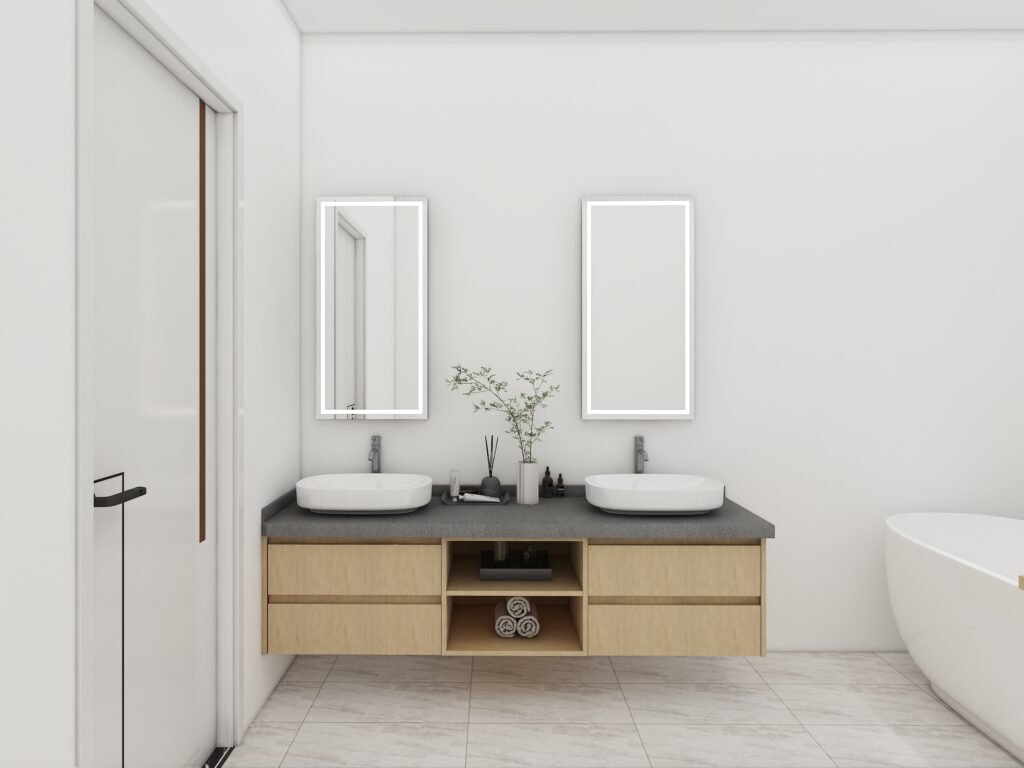
Functional characteristics of bathroom vanity
The function of bathroom vanity is not limited to washing. It can also meet a variety of needs through design. The following are the main functions and their applications:
Washing and use
The core function of the vanity is to provide a comfortable washing area.
The key to its design is:
- Single-person washing: Single-basin washbasin provides sufficient sink depth (about 15 cm) to meet daily washing needs, suitable for single people or small families.
- Multiple people sharing: Double-basin washbasin supports simultaneous use, reducing congestion during the morning rush hour, ideal for home or master bathroom.
- Special needs: Corner washbasin is suitable for narrow spaces, maintaining washing functions while optimizing layout.
Storage and organization
- High storage needs: Freestanding and double-basin washbasins are equipped with multiple drawers and cabinet doors to store towels, toiletries and cleaning supplies to keep the bathroom tidy.
- Light storage: The shelves of open washbasins are suitable for storing commonly used items or decorations, with visual transparency, suitable for small bathrooms.
- Flexible storage: Wall-mounted vanities can be equipped with small drawers or storage baskets below to keep the surface clean and tidy, taking into account storage and space.
Durability and maintenance
- Durable design: Quartz or marble countertops are scratch-resistant; waterproof coatings and anti-corrosion accessories (such as stainless steel screws) adapt to humid environments.
- Easy maintenance: Ceramic sinks are easy to clean, low-VOC coatings reduce harmful emissions, and CS Home’s material selection ensures long-term worry-free use.
Aesthetic function
A beautifully designed dressing table can enhance the overall beauty of the bathroom:
- Integrated design: Combine mirrors, lights, etc. to create a neat and advanced visual effect.
- Material matching: Solid wood is matched with metal and stone to add texture.
- Detailed decoration: For example, retro handles, metal frames, etc., enhance the sense of design.
Smart function (trend)
- Integrated LED light strip: Light mirror with dimming function to optimize the makeup and shaving experience.
- Built-in heating function: prevent mirror fogging.
- USB charging port: provides convenience for charging smart devices.
- Lighting and accessories: Backlit mirrors or gold handles enhance the overall design, CS Home offers a variety of accessories.
Analysis of the advantages and disadvantages of bathroom vanities
Each vanity type has its own unique advantages and limitations. The following is a detailed analysis to help you make a better choice:
Single-basin vanity
Advantages:
- Compact design, suitable for small bathrooms, simple installation.
- Provides basic storage (such as drawers) to meet the needs of a single person.
- Various styles, easy to match modern or Nordic style.
Disadvantages:
- Limited storage space, not suitable for multi-person families.
- Single sink, cannot support simultaneous use.
Double-basin vanity
Advantages:
- Double sinks support simultaneous use by multiple people, improving efficiency.
- Large storage capacity, multiple drawers suitable for family needs.
- High-end materials (such as marble) add a sense of luxury.
Disadvantages:
- Occupies a large space, not suitable for small bathrooms.
- The installation requires confirmation of the spacious layout and the location of the water pipes.
Wall-mounted vanity
Advantages:
- The suspended design frees up floor space and is visually transparent.
- Easy to clean, suitable for small or medium-sized bathrooms.
- Strong modern feel, MDF material supports a variety of finishes.
Disadvantages:
- Limited storage space, additional storage solutions are needed.
- The wall must be load-bearing when installing.
Freestanding vanity
Pros:
- Sufficient storage, drawers and cabinet doors meet various needs.
- Durable solid wood frame, suitable for classic or retro style.
- Solid design, suitable for medium or large bathrooms.
Disadvantages:
- Large footprint, not suitable for narrow spaces.
- Slightly inconvenient to clean the area below.
Open vanity
Pros:
- Visually light, easy to access shelves, suitable for small bathrooms.
- Metal frame is corrosion-resistant, and the industrial style design is personalized.
- Decorations can be displayed to enhance aesthetics.
Disadvantages:
- Limited storage capacity, easy to look messy.
- Open design requires regular tidying.
Corner vanity
Pros:
- Make full use of corners and optimize irregular or narrow spaces.
- Compact design, maintain washing function.
- Light-colored countertops magnify the sense of space.
Disadvantages:
- Very small storage space, only suitable for basic needs.
- Precise measurement of corner angles is required for installation.
Practical advice: Choose the ideal vanity
The following advice will help you choose the right bathroom vanity accurately:
- Measure the space: record the width, depth and location of the bathroom pipes, and reserve 60 cm of operating space. Corner sinks need to confirm a 90-degree angle.
- Choose according to the size of the space: For small spaces, choose a wall-mounted or corner vanity; for large spaces, choose a freestanding or double-basin vanity.
- Clear your needs: Assess the number of users and storage volume, choose a single basin or wall-mounted for one person, double basins for multiple people, and open for decoration.
- Match the style: Refer to other areas of the home (such as the living room or kitchen) and choose consistent materials. For example, for modern style, choose a wall-mounted or open, and for retro style, choose a freestanding or built-in design.
- Focus on durability: Prioritize quartz countertops, waterproof coatings, and Blum slide rails (200,000 times life) to ensure long-term use.
- Focus on 2025 trends: Small space optimization (single basin, wall-mounted, corner), shared design (double basin), and personalized display (open) lead the trend.
Why trust CS Home?
With decades of experience in whole-house customization, CS Home incorporates durability and beauty into every bathroom vanity to ensure both quality and environmental protection:
High-quality materials:
- MDF: high-strength fiberboard, waterproof coating and moisture resistance, suitable for single basin and wall-mounted.
- Plywood: multi-layer wood resists warping, beautiful wood grain, suitable for freestanding.
- Solid wood: sustainable hardwood (such as oak), luxurious texture, suitable for freestanding.
- Metal frame: aluminum alloy or steel, corrosion-resistant, support open.
- Stone countertop: quartz or marble, scratch-resistant, suitable for double basin and freestanding.
Selected accessories:
- Standard: DTC door hinges (acid and corrosion-resistant, excellent buffer), stainless steel screws, adjustable ABS feet, three-in-one connectors to ensure stability.
- Upgrade: Blum drawer slides (200,000 times life, waterproof and rust-proof), ceramic sinks, gold handles, adding exquisite details.
- Environmental commitment: The 2025 series uses low-VOC coatings and sustainable wood to reduce harmful emissions, taking into account both health and environmental protection.
CS Home’s material and accessory selection ensures that each vanity – from the compact and practical single-basin to the luxurious double-basin design – can meet long-term use needs and bring lasting value and beauty.
Conclusion
The bathroom vanity is not only a functional piece of furniture, but also a design core that beautifies and optimizes the bathroom. By understanding the characteristics, functions, advantages and disadvantages of different combinations, you can choose the most suitable vanity type according to the size of the space, storage needs and home style. Single basin, double basin, wall-mounted, free-standing, open and corner washbasins have their own characteristics to meet the needs of different spaces and styles. CS Home provides whole-house customization solutions, from material selection to personalized design, to help you create a perfect bathroom experience. Choose the right vanity for your bathroom now!
FAQs
Q1. What are the common combinations of bathroom vanities?
A1: Common vanity combinations include wall-mounted vanities, freestanding vanities, built-in vanities, open vanities, and double-basin vanities.
Q2. What are the common functions of a vanity?
A2: The functions of a vanity mainly include washing functions (such as single-basin or double-basin designs), storage functions (drawers, shelves, or hidden storage), and decorative functions to enhance the beauty of the bathroom, which can be combined with lights or mirrors for more uses.
Q3. How to ensure the durability of a vanity?
A3: Choose quartz countertops and waterproof coatings. CS Home’s solid wood, MDF, and anti-corrosion accessories are suitable for humid environments.
Q4. Which vanity is suitable for a small bathroom?
A4: Single-basin, wall-mounted, or corner vanity, 40-80 cm wide, optimize space.
Q5. How to choose a vanity for a multi-person household?
A5: Double-basin vanity, more than 120 cm, supports simultaneous use. CS Home’s multi-drawer design meets family storage needs.

